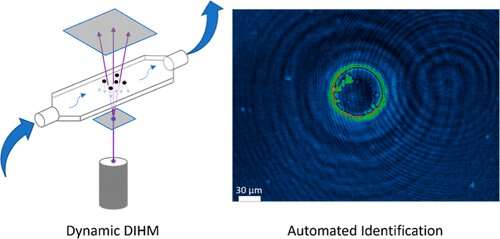Detecting water pollutants using AI

Imagine using your mobile phone to track the spread of water contaminants—such as oil spills or even viruses like COVID-19—in the blink of an eye. Researchers from McGill University have developed new artificial intelligence to make the invisible visible using advances in lasers, optics, and mobile technology.
The new technology uses remote sensing, meaning it acquires information from a distance, and could one day be deployed on satellites to detect in real-time pollutants as small as a nanometer to a centimeter in the water systems around the globe.
"This information could be used to identify, predict, and address the spread of environmental contaminants and outbreaks of diseases or viruses," says Professor Parisa Ariya of the Department of Chemistry and Department of Atmospheric and Oceanic Sciences, who led the team of researchers. "It's a game-changer, allowing governments, industries, and communities to act quickly, share information, and reduce damage to the ecosystem and risks to public health."
The study is published in Analytical Chemistry.
More information: Ryan Hall et al, Novel Dynamic Technique, Nano-DIHM, for Rapid Detection of Oil, Heavy Metals, and Biological Spills in Aquatic Systems, Analytical Chemistry (2022). DOI: 10.1021/acs.analchem.2c02396
Journal information: Analytical Chemistry
Provided by McGill University





















